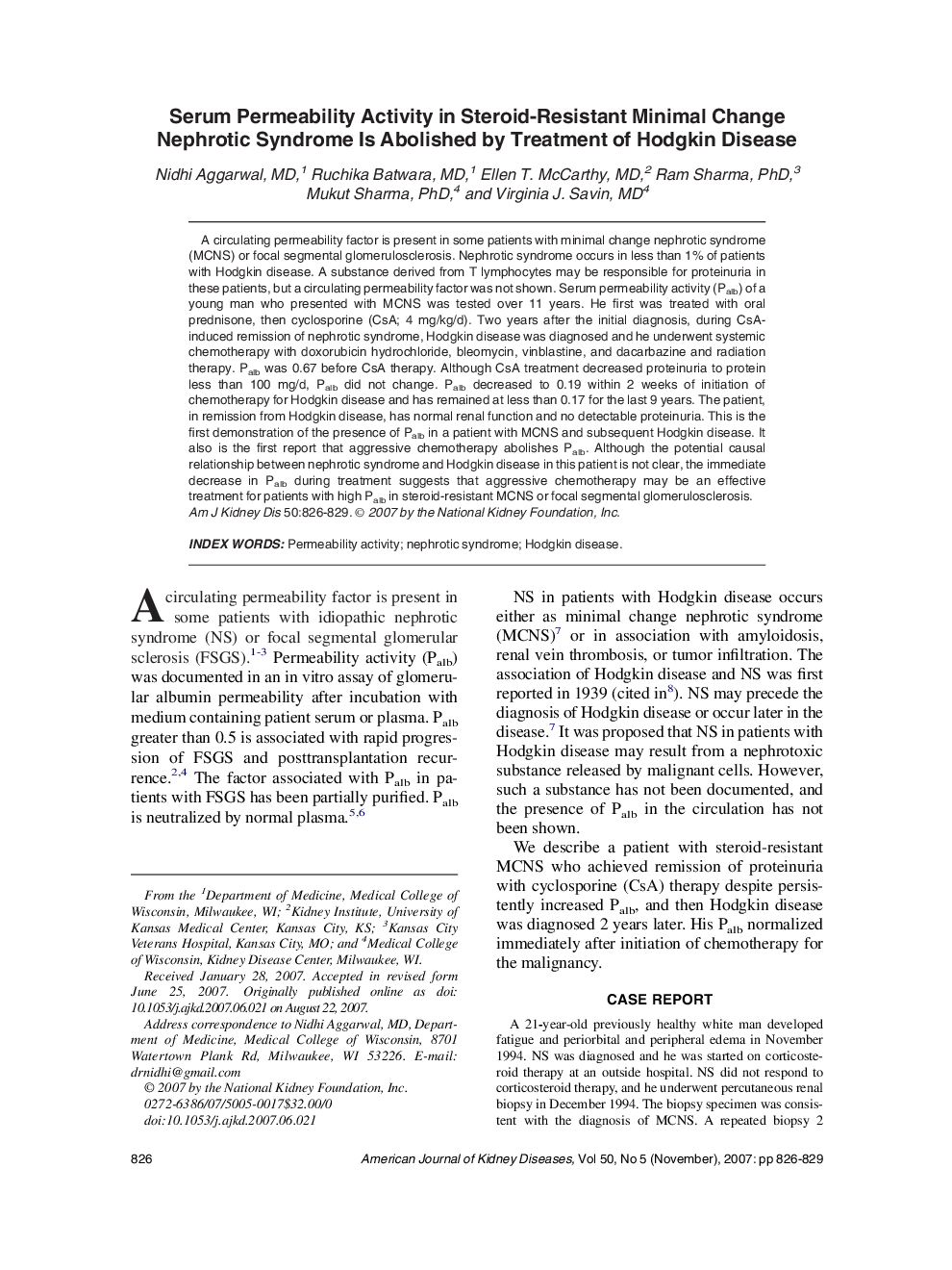| Article ID | Journal | Published Year | Pages | File Type |
|---|---|---|---|---|
| 3852370 | American Journal of Kidney Diseases | 2007 | 4 Pages |
Abstract
A circulating permeability factor is present in some patients with minimal change nephrotic syndrome (MCNS) or focal segmental glomerulosclerosis. Nephrotic syndrome occurs in less than 1% of patients with Hodgkin disease. A substance derived from T lymphocytes may be responsible for proteinuria in these patients, but a circulating permeability factor was not shown. Serum permeability activity (Palb) of a young man who presented with MCNS was tested over 11 years. He first was treated with oral prednisone, then cyclosporine (CsA; 4 mg/kg/d). Two years after the initial diagnosis, during CsA-induced remission of nephrotic syndrome, Hodgkin disease was diagnosed and he underwent systemic chemotherapy with doxorubicin hydrochloride, bleomycin, vinblastine, and dacarbazine and radiation therapy. Palb was 0.67 before CsA therapy. Although CsA treatment decreased proteinuria to protein less than 100 mg/d, Palb did not change. Palb decreased to 0.19 within 2 weeks of initiation of chemotherapy for Hodgkin disease and has remained at less than 0.17 for the last 9 years. The patient, in remission from Hodgkin disease, has normal renal function and no detectable proteinuria. This is the first demonstration of the presence of Palb in a patient with MCNS and subsequent Hodgkin disease. It also is the first report that aggressive chemotherapy abolishes Palb. Although the potential causal relationship between nephrotic syndrome and Hodgkin disease in this patient is not clear, the immediate decrease in Palb during treatment suggests that aggressive chemotherapy may be an effective treatment for patients with high Palb in steroid-resistant MCNS or focal segmental glomerulosclerosis.
Keywords
Related Topics
Health Sciences
Medicine and Dentistry
Nephrology
Authors
Nidhi MD, Ruchika MD, Ellen T. MD, Ram PhD, Mukut PhD, Virginia J. MD,
